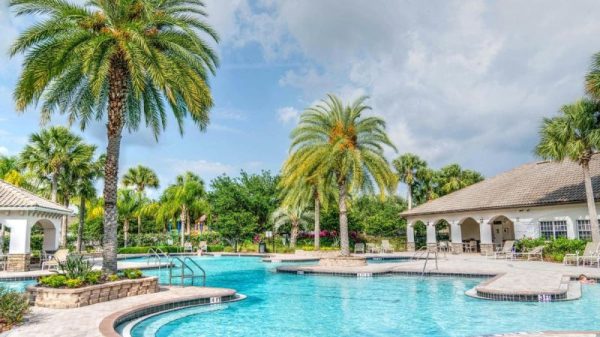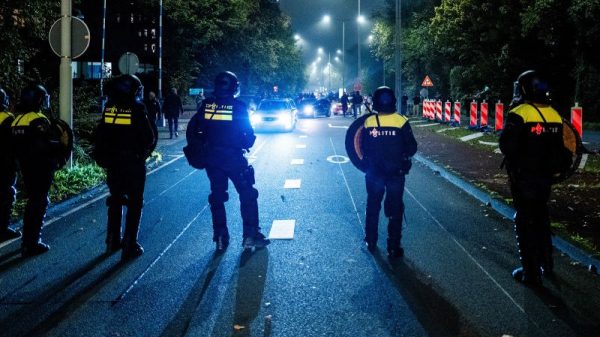On a recent Sunday afternoon in the Canadian city of Brampton, just outside of Toronto, a face-off between two religious groups outside a Hindu temple erupted into violence.
Pro-Khalistan Sikhs, there to protest a visit by Indian consular officials, clashed with members of the Hindu congregation. Each side hurled flagpoles and fists at one another in an incident which triggered days of violence across Canada and led to multiple arrests.
The clashes earlier this month were the latest flashpoint in a broader dispute between Canada and India, which has simmered for decades but boiled over in the last year over the assassination of a Sikh separatist on Canadian soil.
Last year, Canadian Prime Minister Justin Trudeau said he had credible information linking the Indian government to the assassination of Hardeep Singh Nijjar, an Indian-born Canadian national and Sikh dissident who was an outspoken supporter of Khalistan, a proposed autonomous homeland for Sikhs in northern India.
Canadian authorities have repeatedly said they have shared the evidence with Indian counterparts. Indian government officials deny that Canada has provided evidence and have called the allegations absurd.
New Delhi had previously designated Nijjar as a terrorist and accused him of being behind a banned militant group that sought to “radicalize the Sikh community across the world” in support of Khalistan. The movement is banned in India and considered a national security threat.
Tensions between Ottawa and New Delhi further escalated last month when the Canadian government publicly accused Indian government agents – including Indian Prime Minister Narendra Modi’s closest aide – of plotting to kill pro-Khalistan Sikhs in Canada, which is home to one of the largest Sikh communities outside of India.
Canada expelled six Indian diplomats, including the high commissioner, after police linked the envoys to homicides, extortion and other violent acts against Sikh separatists in the country, including Nijjar. Canada’s national police force also said it had uncovered more than a dozen “credible and imminent threats to life” of members of the South Asian community, specifically from the pro-Khalistan movement.
India, in turn, expelled six Canadian diplomats.
Canada further ratcheted up tensions by outright accusing Amit Shah – India’s home affairs minister and Modi’s number two – of ordering the violent plots. Shah, an influential player in Indian domestic politics, is widely seen as Modi’s potential successor in the ruling Hindu-nationalist Bharatiya Janata Party.
The stunning and highly public allegations by Canada – which India has strongly denied calling them “absurd and baseless” – have raised concern among its “Five Eyes” intelligence-sharing allies – the United States, United Kingdom, Australia, New Zealand – who have pursued deeper ties with India in recent years, in part to counter China’s increasingly aggressive behavior in the Asia-Pacific region.
The US has also accused an Indian government official of being involved in a conspiracy to kill a Sikh activist and American citizen in New York City. The Indian government similarly denied any involvement in the alleged plot, however New Delhi’s response in setting up a high-level committee to investigate the American accusations contrasts with its vocal condemnation of Canada’s accusations.
While the existence of pro-Khalistan factions in Canada has long bothered India and acted as a wedge between the two countries, experts say tensions have sharply escalated under Modi and Trudeau, with little prospect for resolution.
“It was really like a festering sore for quite some time,” said Michael Kugelman, director of the South Asia Institute at the Wilson Center in Washington, DC, who said the disagreement over Khalistan “has really torpedoed the relationship.”
The Khalistan disconnect
At the heart of the current conflict between India and Canada is the disconnect in how each side views the Khalistan movement, says Kugelman.
The Khalistan movement grew in the 1980s and 1990s when the Indian government violently cracked down on Sikhs, following the assassination of former Indian Prime Minister Indira Gandhi by two of her Sikh security guards in 1984.
Thousands of Sikhs moved abroad to places like Australia, the UK, the US, and Canada. While the Khalistani ideology lost resonance in India, it remained more alive in the diaspora.
India has long accused Canada of harboring Sikh extremists, allowing more hardline elements of the Khalistan movement to thrive – a premise Canada rejects, said Stephanie Carvin, a former Canadian intelligence analyst and associate professor of international affairs at Ottawa’s Carleton University.
Violence related to Sikh extremism in Canada goes back decades with the 1985 bombing of Air India Flight 182, the worst terror attack in Canada’s history, a tragedy that continues to strain relations between the two countries.
Canada-based Sikh extremists planted a bomb on a Mumbai-bound passenger flight from Montreal, killing all 329 people on board, in what was widely seen as revenge against the Indian government. The only person who was convicted in the bombing was released in 2017 by Canadian courts after serving two decades in jail.
For years, India has accused Canada of failing to prevent the attack after it warned the Canadian government of the possibility of a bombing. A Canadian inquiry two decades later found the attack was due to a “cascading series of errors” by the government, police and intelligence services.
While most of the victims were Canadians, the tragedy was viewed by many in Canada as “something foreign,” Carvin said, which some observers allege influenced the government’s response.
Aside from a small minority of violent Sikh separatists, Canada does not see the Khalistan movement as the threat India does, according to Carvin.
Canada has said Sikhs have a right to peaceful protest and Trudeau has largely avoided categorical condemnation of Sikh separatism. However, the Canadian prime minister recently acknowledged that Khalistan separatists “do not represent the Sikh community” in Canada.
“India and Canada have typically taken a very different view as to what constitutes permissible activity, because it doesn’t break Canadian law to advocate for a Sikh separatist state in Canada,” Carvin said.
But the Sikh insurgency of the 1980s and its campaign of violence remains very strong in the memory of the New Delhi political elite, said Harsh Pant, foreign policy head at the New Delhi-based Observer Research Foundation think tank.
A downward spiral of relations
While the Khalistan issue has persisted for decades, relations between Canada and India have plummeted under Modi and Trudeau.
When Trudeau visited India in 2018 for his first official visit, his calendar, which was light on diplomatic meetings, was seen by many as a “snub” from New Delhi. Local media in both India and Canada linked Trudeau’s reception – or lack thereof – to the issue of Sikh separatists.
A year earlier, the Canadian leader was seen at a Sikh event in Toronto where separatist flags and posters depicting an extremist Sikh leader killed in a 1984 Indian Army operation were displayed.
In October, Trudeau told reporters that India made a “fundamental error” by “supporting criminal activity against Canadians on Canadian soil.”
“Here is a case of the top official in Canada very publicly leveling one of the most serious allegations one could make against India, one that relates to an issue that is extremely sensitive for New Delhi,” Kugelman, of the South Asia Institute, said. “It really reinforced this anger in New Delhi that Canada simply doesn’t care about these concerns, and it’s willing to embarrass India.”
Carvin, the former Canadian intelligence analyst, said she believes Canada was pushed into a corner.
“It seems pretty clear that the Indian government is not willing to meet with its Canadian counterparts in the same way that they’re willing to meet with (the US),” she said.
Earlier this month the two leaders had what looked like an amicable exchange as they posed for a group photo at the recent G20 summit in Rio de Janeiro, Brazil, alongside US President Joe Biden. Photos showed Biden with his arm around Modi, as the three world leaders shared a laugh.
Growing mistrust
Canadian leaders were quick to denounce the recent violence in Brampton and crack down on those involved in the clashes. At least five people have been arrested, and a local police officer was suspended after he was caught on camera participating in the protest while off duty, according to CBC. Brampton’s city council passed a bylaw prohibiting protests around religious places.
Modi also spoke out on the violence, calling it a “deliberate attack on a Hindu temple in Canada,” slamming the protesters for “cowardly attempts to intimidate our diplomats.”
“Such acts of violence will never weaken India’s resolve,” Modi wrote on X. “We expect the Canadian government to ensure justice and uphold the rule of law.”
That Modi, who up until now has largely avoided weighing in on the diplomatic spat, issued comments on the tussle shows just how fraught relations have gotten, analysts say.
Implicating Shah in the Nijjar killing on Canadian soil was an “incredibly serious provocation” from Ottawa, Kugelman said.
“At this point, the risk is that it could really hijack the relationship, to the point that the areas of cooperation that continue to play out, such as trade, could become casualties,” Kugelman said.
Pant, of the Observer Research Foundation, said he does not believe the relationship is salvageable under current leadership, with so much ill will between Modi and Trudeau. Canada’s next federal election is set to take place before next October.
“The level of mistrust between India and the Trudeau administration has been building up and growing,” Pant said, adding that he doesn’t think there is “space to diplomatically resolve it.”







































